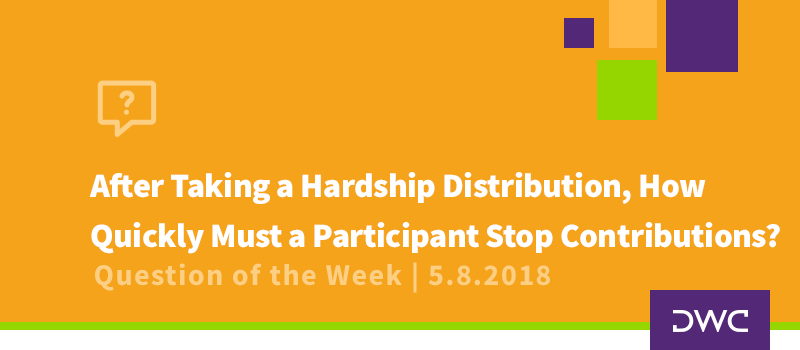
Should We Make Up for Earnings Lost as a Result of a Delayed Distribution?
Facts
Over the past several months, our turnaround times for normal business processes have lagged somewhat as we have adjusted operations in response to the various stay-at-home orders. When participants in my 401(k) plan request distributions, I usually make them a priority and forward them along for processing by the next day at the latest. However, there was one request at the beginning of this that took me a week to review. It was definitely due to being pulled in so many different directions and not from just dragging my feet, but the delay did cause the participant’s account to suffer some investment losses in the interim.
Question
Is there any way for me to make up these lost earnings for this participant?
Answer
Yes, there are ways to do this! The thing is, and this will sound like business as usual, it’s important to look at some of the details before simply making additional deposits to the participant’s account.
Let’s start with the general rule and go from there. Any time money goes into a plan it, it must be treated as a contribution. When we are talking about company money, that means it must be treated as a matching or profit sharing contribution. While that isn’t necessarily a problem, it requires that those contributions be allocated as directed by the plan document. That could mean that all participants would also have to receive a similar contribution, and it can also trigger additional nondiscrimination testing requirements.
So, what is the option for making the participant whole without running into those issues? You can make a so-called restorative payment. In a nutshell, a restorative payment is a special type of contribution you can make to just one or more individuals to “compensate” them for certain losses.
Let’s take a look at some additional rules that apply to restoration payments. After all, they are for specific situations and not to be used as loopholes to avoid allocation or testing requirements. First is that in order for a deposit to be treated as a restorative payment, it must be to correct an issue one could reasonably consider a fiduciary misstep.
A second thing to remember is that if you determine this particular delay was, in fact, a fiduciary error that supports making a restorative payment, it likely means you should apply a similar standard to all other distribution requests (in the recent past and in the future). If you typically turn around distributions in two days and this one took you five, that might still be administratively reasonable under the circumstances. However, if it took two weeks, it seems one could reasonably argue there was a fiduciary misstep.
It is really a facts and circumstances type judgement call. Similar to 401(k) deferral deposits, the actions you take set your plan’s standard. If you impose too tight a standard on yourself here (because you want to make the participant whole and not because there was an undue delay), you could set a precedent you don’t want to set.
If the five-day (or two-week) turnaround time is truly excessive given your standard, making a restorative payment deposited to the participant's account as earnings may be appropriate. However, if five days is within what you normally consider reasonable, you may want to reconsider to avoid setting a precedent that creates unintended consequences.
To protect your plan participants and yourself as plan fiduciary, it is a good idea to document your processes and procedures. Not only does it help ensure that things don’t fall through the cracks, but the regulatory auditors tend to be more forgiving of minor missteps when there are documented internal controls in place.
With that said, be careful not to “procedure” yourself into a corner by being unnecessarily onerous. Although you may always intend to complete an action item very quickly, it doesn’t take anything as serious as a global pandemic for schedules to occasionally get derailed. For your current situation, perhaps the documentation of your process might be that you review all distribution requests as soon as administratively possible but no later than some reasonable outside number of days. Communicating a process like this sets participants’ expectations and provides an outside time frame while minimizing your potential liability if you are not able to get to something immediately.
Even the best laid plans can sometimes go awry. If you have questions about establishing and/or documenting solid internal controls, your DWC team is here to help.
Want a printable version of this article? Click here.


















